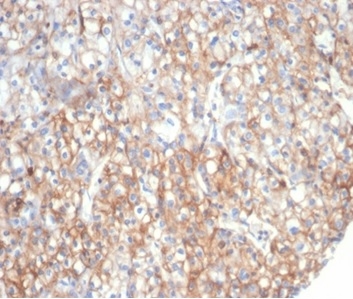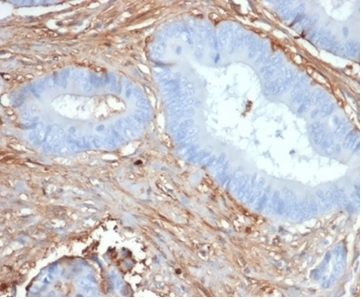Free Shipping in the U.S. for orders over $1000. Shop Now>>

Formalin-fixed, paraffin-embedded human kidney carcinoma stained with Fibrillin 1 Mouse Monoclonal Antibody (FBN1/6933). HIER: Tris/EDTA, pH9.0, 45min. 2°C: HRP-polymer, 30min. DAB, 5min.

Formalin-fixed, paraffin-embedded human prostate stained with Fibrillin 1 Mouse Monoclonal Antibody (FBN1/6933). HIER: Tris/EDTA, pH9.0, 45min. 2°C: HRP-polymer, 30min. DAB, 5min.
Fibrillin-1 is an extracellular matrix glycoprotein that serves as a structural component of calcium-binding microfibrils. These microfibrils provide force-bearing structural support in elastic and non-elastic connective tissue throughout the body.Mutations in this gene are associated with Marfan syndrome.
There are no reviews yet.